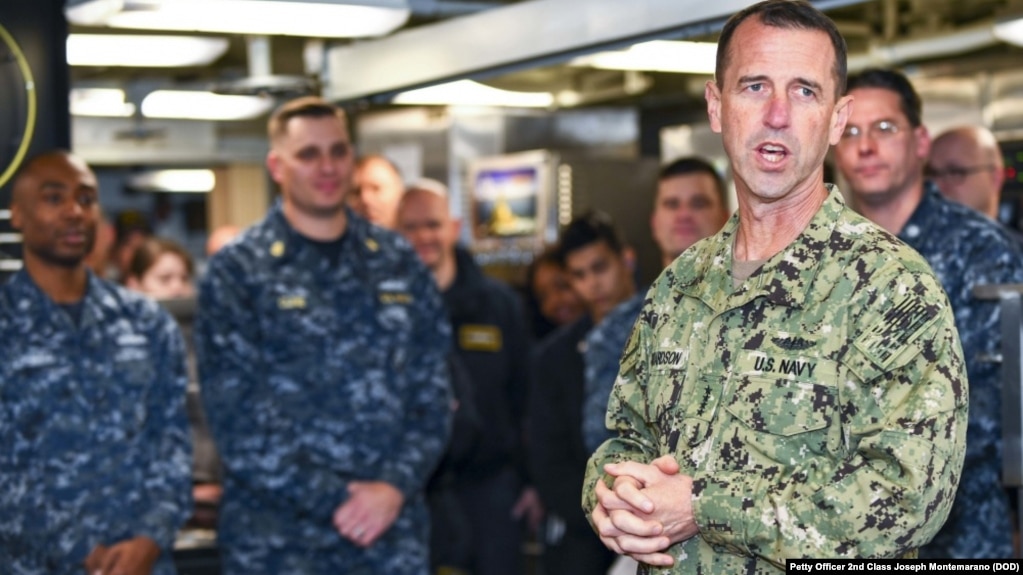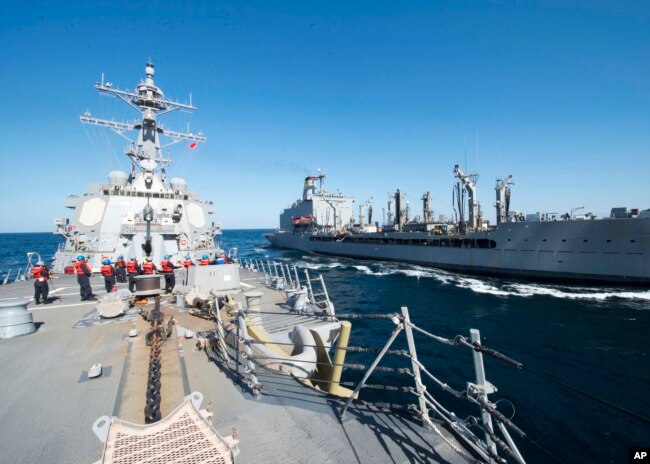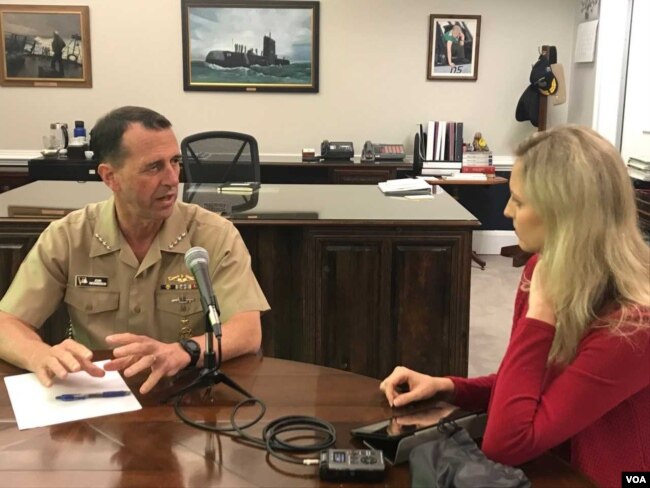Carla Babb
 Chinese military vessels are now operating in the Northern Atlantic, and Russian submarines are prowling those same waters at a pace not seen since the end of the Cold War, the Navy’s top admiral told VOA in an exclusive interview. Chief of Naval Operations Adm. John Richardson said China's military movements from the North Atlantic into the Mediterranean Sea create a "new dynamic." "Even five years ago, we wouldn't have seen anything like this,” Richardson said.
Chinese military vessels are now operating in the Northern Atlantic, and Russian submarines are prowling those same waters at a pace not seen since the end of the Cold War, the Navy’s top admiral told VOA in an exclusive interview. Chief of Naval Operations Adm. John Richardson said China's military movements from the North Atlantic into the Mediterranean Sea create a "new dynamic." "Even five years ago, we wouldn't have seen anything like this,” Richardson said.
According to Richardson, the Chinese navy is a global one that is both "ready and capable" of operating wherever Beijing wants.
“They're certainly a pacing competition for us in terms of the naval threat,” he told VOA.
However, Chinese operations near the United States' eastern shore are not as threatening as Russian vessels lurking below the ocean’s surface. NATO allies from North America to Europe are increasingly concerned about the uptick of Russian submarine activity in the North Atlantic.
“We're talking about more (activity) than we've seen in 25 years,” Richardson said.
U.S. officials worry that Moscow may try to use its submarines to cut or tap into undersea cables that connect the two continents.

Secretary of Defense Jim Mattis, speaks to reporters at the Pentagon, July 27, 2018.
2nd Fleet
Due to these increased complexities in the North Atlantic, the United States has recently reactivated a command to secure the ocean on its eastern coast.
The U.S. 2nd Fleet helps fulfill new guidelines under Secretary of Defense Jim Mattis’s National Defense Strategy, which makes great-power competition, rather than terrorism, the primary focus of U.S. national security.
The fleet was deactivated in 2011 because the Navy needed the funds for acquisitions. It was reactivated in Norfolk on July 1.
Richardson will preside over the fleet’s formal establishment ceremony aboard an aircraft carrier in Norfolk on August 24.
The 2nd Fleet commander will also head NATO’s Joint Forces Command Norfolk. Richardson said the dual-hatted command structure allows the U.S. and its allies to adapt together as they confront the rising Russian challenge.

FILE - U.S. Navy, guided-missile destroyer USS Bulkeley participates in a replenishment-at-sea with fleet replenishment oiler USNS John Lenthall in the Gulf of Oman.
Russian jamming
As the U.S. Navy adjusts its geographic commands, Richardson said it also must stay ahead in the competitive realm of information warfare.
Navy sailors on the high seas are having to defend themselves from Russian electronic jamming devices much like those used against U.S. ground troops operating in Syria.
Richardson said sailors had “absolutely” encountered Russian jamming devices while operating in international waters.
“This is an emerging part of our business now," he told VOA.

Admiral John Richardson and VOA reporter Carla Babb at the Pentagon.
Richardson did not elaborate on how the jamming affects the Navy. Electronic warfare attacks have the potential to disturb navigation and communication systems.
“Those disruptive technologies…are really going to be decisive in the future fight, and we've got to make sure that we're investing in those as well,” Richardson said.
No comments:
Post a Comment